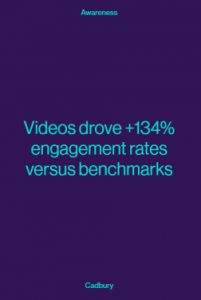More and more businesses today are bringing about a positive change in their organizational model to be able to make an impactful contribution to the world. That is why we are seeing many high profile individuals take on the role of social entrepreneurs and coming up with creative ideas and strategies to help the society.
Hugh Evans for example is only 29 years old and is the Cofounder of The Global Poverty Project that is committed to ending extreme poverty. Then there’s Chris Anderson, the Managing Editor of Protein Daily, who makes it a point to build a team of talented writers and freelancers from impoverished third-world countries. Ryan O’Connor of One Tribe Apparel has committed to donating $ 1.00 for every item sold to the Kwah Dao School that provides free education to Burmese refugee children.
There are many other social entrepreneurs engaged in similar missions and ventures.
Social entrepreneurs engage in social business.
While there is no specific definition of this term, it basically refers to the application of commercial strategies for the purpose of a social or environmental purpose.
Financial gain is not the primary objective of such businesses as their social goals supersede the desire to achieve profit.
But that definitely does not mean that all social businesses are non-profit.
There are primarily two types of social businesses: for-profit and private sector businesses that have a social goal. These companies want to maximize profits but not at the cost of their primary social goal. In other words, while they do worry about their financial bottom line, they want to ensure that their business has a positive impact on the society and the environment.
Finally, there are non-profit organizations that generate revenue for the sole purpose of supporting their social goals. They have no desire to generate profit to remain financially viable but their ultimate goal is to contribute to society.
According to findings from the Great Social Enterprise Census, social enterprises which include those with a social or environmental mission generated $ 300 million in revenue. It is very likely that this census does not include thousands of other organizations that could possibly self-identify as social enterprises. The census also reveals that around 45 percent of social enterprises in the US have less than $ 250,000 in revenue while 22 percent earn around $ 2,000,000. 35 percent of social enterprises are non-profit while 31 percent are regular LLCs. Most of these organizations are engaged in areas of economic development, workforce development, energy and environment, education and global missions.
Social businesses are often said to have an extended bottom line i.e. they are considered to have a double or triple bottom line as they are driven by their social or environmental goals as well as profits. For a social enterprise, any financial revenue that the organization generates is basically a means to an end. It is the only way they can achieve their social goals. For example an enterprise that is in the contracting business to create jobs is primarily helping individuals find employment and is contributing to the well-being of the community.
Social entrepreneurs may be engaged in pursuing social goals but they require the same business acumen and entrepreneurial zeal as those engaged in profit-making ventures. Social entrepreneurs use innovation and creativity to bring about social change in education, healthcare, and the environment.
While their goals may be different, they too have to function like business entrepreneurs to ensure their organization is strong and sustainable.
In order to be a successful social entrepreneur, you must be pragmatic have a strong vision. That is because social entrepreneurs have to bring about sustainable change and have to focus on creating social or ecological value.
Social entrepreneurs need to be passionate and must be committed to solving a social problem.
While doing so, they will face hurdles and constraints but this is where they will have to respond with the right strategies and innovation.
These days, more and more young entrepreneurs are dedicating their skills and talent to creating businesses that have a social entrepreneurial element. This way they can make a profit as well as solve a social problem. As our natural resources deplete and our environment suffers because of our profit-making activities, it is important to understand that contributing socially in some form is also imperative for the long-term survival of the business itself.
In order to determine which social enterprise would be most successful, it is important to shift focus from the consumer to the business or government. For example developing and marketing software that improves efficiency of factories and helps them reduce pollution will not only provide profitability to the company developing the software but will also increase the factories productivity and help our environment – all at the same time. This way, a profit-making business can be successful while having a socially entrepreneurial element to it.
Therefore, it is possible to run a successful enterprise while contributing to the society and many of the best companies are doing just that. Many organizations donate a portion of their profits to help students fund their education, and there are a few who are even micro-financing enterprises in poor countries. Providing a cheap internet service or establishing a school in a third world country could have a huge impact on that region but would have only a minimal impact on a bottom line of a successful organization. The same is true for companies producing and marketing environmentally friendly products such as soaps, shampoos, detergents and even energy saving light bulbs. All these successful make companies money while still having a positive impact on the community. It’s the best of both worlds and the outcome is truly admirable.
Digital & Social Articles on Business 2 Community(23)





